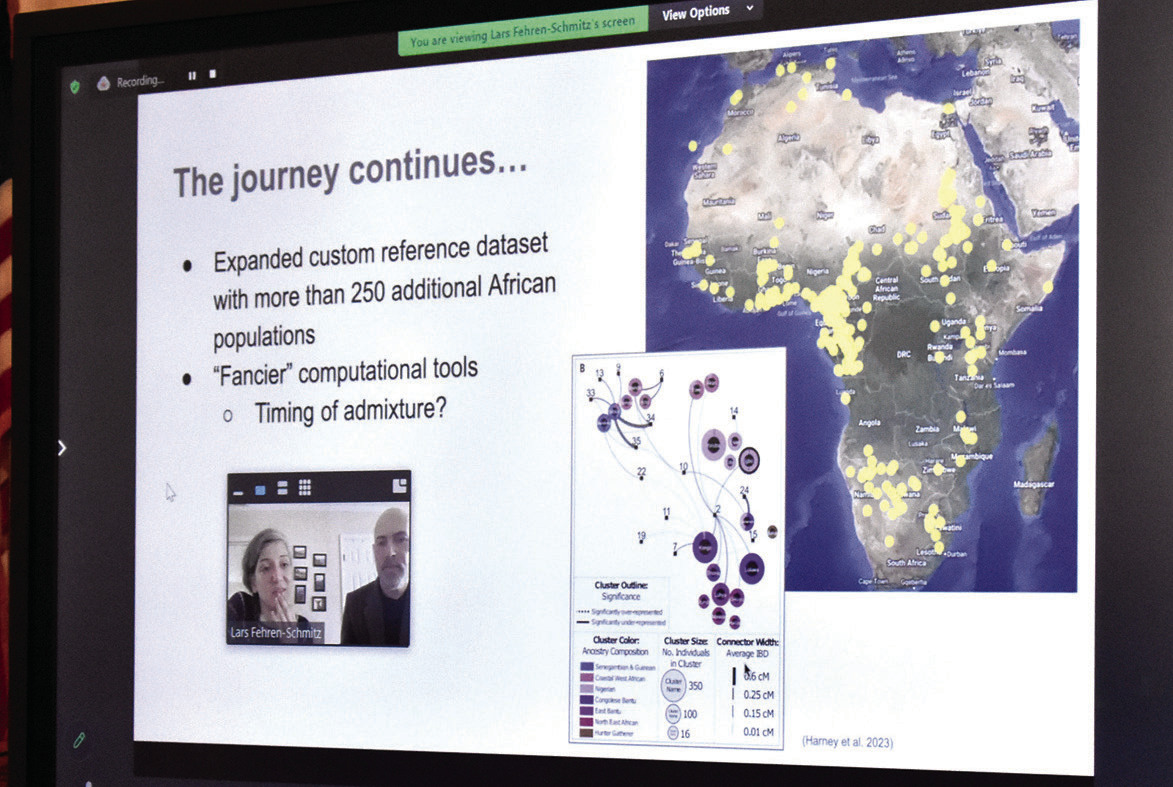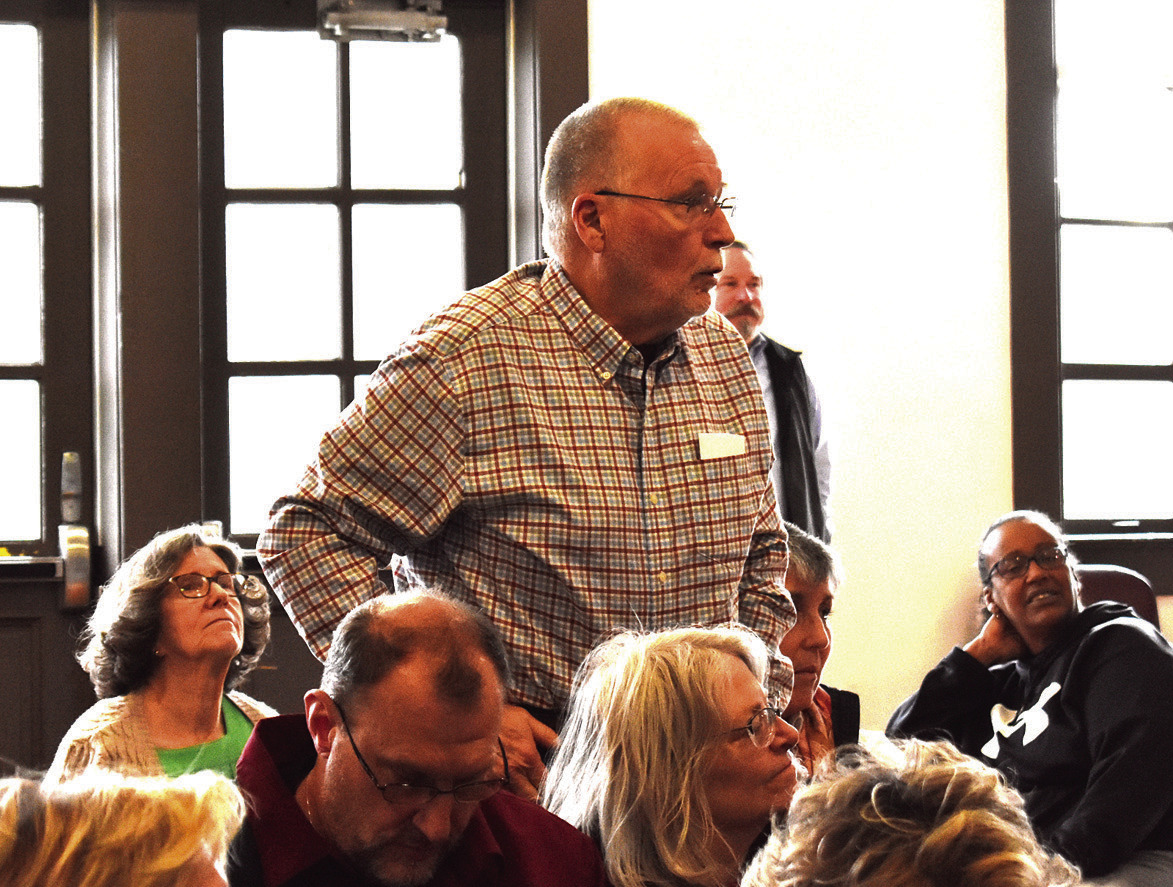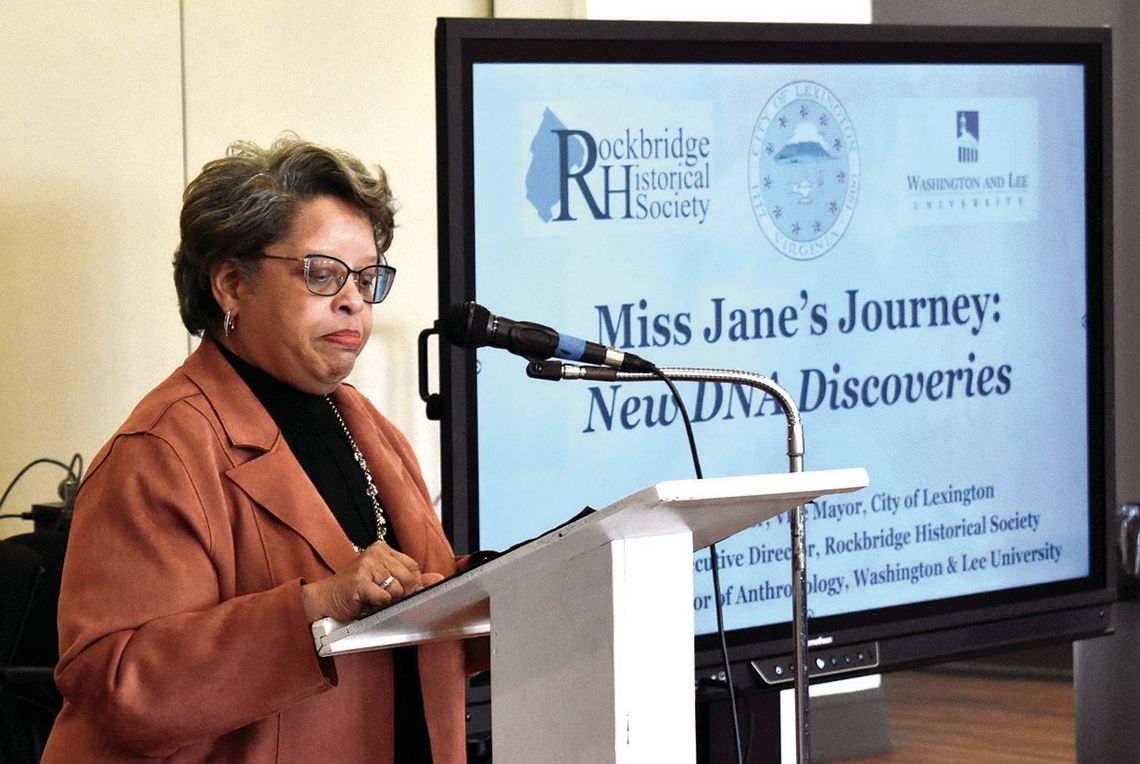Researchers Speak To Full House At Event
“It’s been a few years since many of us gathered at Evergreen Cemetery for the burial and memorial service for Lexington’s Jane Doe,” said Lexington Vice Mayor Marylin Alexander this past Sunday to a packed crowd at the Community Center on Diamond Street. The occasion was the presentation of DNA analysis of the woman whose remains were found during the construction of the courthouse parking garage in July 2008.
Before her body was reburied in the cemetery, a tooth was retained and sent to the Paleogenomics Lab at the University of California, Santa Cruz, in hopes of uncovering some of the secrets of this mysterious woman.
There was a marked contrast between the day of her reburial and Sunday. It was a sunny and sweltering day in May 2019 when her pine coffin covered in fresh flowers was lowered into the ground. The day of the presentation was windy and cold with periods of snow flurries.
When the remains were discovered 16 years ago, Dr. Charles Boyd, a forensic scientist from Radford University, discovered a coffin nail and ruled out a crime scene. Upon examination of the bones, Boyd said that the bones were those of a woman of African-American descent, aged 19 to 23, and about 5’7”. Her teeth revealed evidence of dental disease and a poor diet.
Initially she was called “Ancient Jane” by then police chief Steve Crowder. Alexander objected to the name and later insisted that she be called Miss Jane, as titles are very important in the African-American community. “Had she lived a long life or better yet, had been born in modern times or even lived today,” Alexander said, “I kept envisioning her being this elderly lady who commanded the ultimate level of respect from her community.”
In the days and years following the unearthing of Miss Jane’s remains, Alexander, along with Washington and Lee University professor Alison Bell and the late W&L associate professor of history Ted DeLaney became a surrogate family for Miss Jane as they researched 19th century burial practices and traditions so that they could determine how best to honor Miss Jane.
“Eric Wilson, the Rockbridge Historical Society director and Lylburn Downing Middle School teacher who collaborated with us all these years, took up the mantle for Ted who is no longer with us physically but is certainly here in spirit. It has been his vision that continues to be a reason for the next steps, to see this to the end, reminding us to move forward to find out more and more.”
The Findings
Alison Bell then introduced Kalina Kassadjikova and Lars Fehren-Schmitz of the University of California Santa Cruz’s paleogenomics lab. They attended the presentation via Zoom.
Fehren-Schmidtz said it was “highly meaningful” to be part of the Miss Jane project and provided some background on the basics of DNA analysis. “Each of us is a unique mixture of our parents’ DNA,” he said. Mitochondrial DNA is passed down from our mothers and the Y chromosome is from our fathers.”
As the DNA collected from Miss Jane came from one of her molars, Fehren-Schmitz said that he himself collected DNA from one of his own teeth that had been extracted by a dentist. Even after properly storing the tooth in the lab, after two weeks the DNA had begun to degrade. This just goes to show how quickly DNA can dissipate.
Kassadjikova described the DNA lab as a sterile environment and that it was helpful for her to be in touch with the place where the individual lived.
“From Miss Jane’s molar, we were able to confirm her sex,” she said.
Three rounds of shotgun sequences were done. A shotgun sequence is a method used for sequencing random DNA strands.
“Contamination estimates were within parameters of what we would expect,” she said.
Things that compromise the integrity of DNA samples include burial environment, humidity, temperature, pH-value and UV exposure.
Despite the fragility and age of the sample, it was clear that Miss Jane only had African ancestry concentrated in the areas of West and Central Africa. Her ancestors had multiple places of origin.
The Journey Continues The plan is to rerun analysis of the DNA sample at some point as technology advances. It may be possible to determine one day her place of birth, make links between Miss Jane and the modern population, and establish her kinship with people living in the community today.
Further results could unveil information about how she lived her life and perhaps the reason behind her untimely death.
The researchers will take mandates from the community since Miss Jane no longer has a say.
Several times last Sunday, the wind blew open a rear door of the community center. It was almost like Miss Jane wanted to make her presence known. Perhaps she objects to the name she’s been given.
Alexander said, “She is probably shouting from the heavens, ‘Gosh, I wish you all knew my name, because it’s definitely not Jane!’”

KALINAKASSADJIKOVAand Lars Fehren-Schmitz of the Paleogenomics Lab at the University of California, Santa Cruz, delivered their findings about Miss Jane’s DNA via Zoom. They also answered questions from the audience after the presentation. (Joann Ware photo)

JON ELLESTAD, who was Lexington’s city manager at the time of the discovery of Miss Jane’s remains, answers a question from the public at Sunday’s event. (Joann Ware photo)
.jpg)


